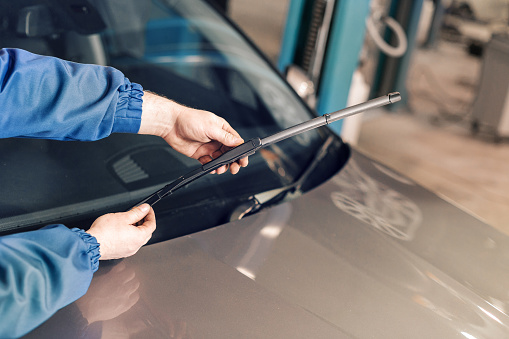November 21, 2024
Choosing Replacement Wiper Blades
You don’t have to be a seasoned driver–or a Mechanic–to realize that clear visibility is crucial for safely operating your vehicle. In ordinary conditions, the aerodynamic design of your vehicle helps prevent small debris from sticking to your windshield. When you encounter rain, snow, fog, or splashing, you often need a little help to clear your windshield. That’s where a good set of windshield wiper blades come in handy.
As an overlooked part of the vehicle, you never appreciate a good pair of wiper blades until you don’t have them. There’s nothing worse–or more potentially dangerous–than having your car view obstructed. That is, until your faulty wiper blades smudge the dirt when you try to clear it.
Conventional Wiper Blades
Conventional wiper blades are usually the most cost-effective to purchase. They have durable metal frames with hinges that lets the blade conform to the shape of your windshield as it moves across the surface. Due to the movement of the frame and exposed parts, conventional wiper blades are affected by windy winter driving conditions, snow, and ice.You can get conventional wiper blades that are made for winter, but we wouldn’t really recommend it. These simply have a rubber covering to help protect the frame and do not hug your windshield as well as other models. In a bad storm, these could break and cost you more to replace multiple times.
Beam Wiper Blades
Beam wiper blades are more lightweight than conventional models and also tote a more aerodynamic, frameless design. This helps reduce the wind lift issue we mentioned earlier, and the build-up of ice or snow. Beam blades are conformed to the shape of your windshield and will stay that way to maintain a smooth, quiet, streak-free wipe no matter what weather you encounter.
Winter beam blades endure special testing to ensure they withstand extreme winter conditions and perform in harsh weather.
What Else Should You Look For?
You’ll want to look for a wiper blade made with a synthetic rubber blend. While traditional rubber is great for conforming to your windshield, it can deteriorate over time. In fact, the number one cause of rubber deterioration is the sun, so it’s not the best option for your wiper blades.
When to Replace Your Wiper Blades
Replacing your windshield wiper blades is essential for maintaining visibility and ensuring safe driving. Here are some signs that it’s time to replace them:
- Streaking or Smearing: If your wipers leave streaks or a hazy film after wiping, it may indicate that the rubber has worn down or is damaged.
- Squeaking Sounds: If the wipers make squeaky noises while in use, it may mean that the rubber is worn or that there’s dirt and debris on the blade or windshield.
- Visible Damage: Check for cracks, tears, or other visible damage to the rubber. Even a small tear can affect the blade’s performance.
- Chattering: If the blades skip or chatter over the windshield, it could mean they have become warped or hardened, affecting their ability to properly clean the glass.
- Rubber Hardened or Cracked: Over time, exposure to sun, heat, and cold weather can cause the rubber to harden, crack, or split, leading to reduced effectiveness.
- Age: Wiper blades generally last about 6 to 12 months, depending on weather conditions and usage. If they’re over a year old, it’s good to check them for wear.
- Reduced Visibility: If your wipers aren’t effectively clearing rain, snow, or dirt, and it’s affecting your visibility, it’s definitely time for a replacement.
Typically, it’s best to replace wiper blades every 6 to 12 months, but they may need replacing sooner if you notice any of the above signs.

